Unit 1- Global Prehistory 30,000-500 BCE Cartes | Quizlet
1/13
Earn XP
Description and Tags
ap art history
Name | Mastery | Learn | Test | Matching | Spaced |
|---|
No study sessions yet.
14 Terms
paleolithic
Old Stone Age; hunter gatherers, small portable sculptures
mesolithic
Middle Stone Age; settled communities and inventions; bow and arrows, pottery, domestication of animals
neolithic
New Stone Age; cultivated earth, raised livestock, organized settlements, people had occupations, constructed first homes, climate stabilized
Venus of Willendorf 22,000-24,000 BCE
limestone; portable (usually very small); made with exaggerated features b/c women are important for reproduction

Camelid Sacrum 14,000-7,000 BCE
shape of a canine; bone sculpture from camel-like animal; image of a dog or wolf; "second skull";
sacrum: triangular bone at base of spine
PURPOSE: burial and sacrificial rituals and the creation of myths
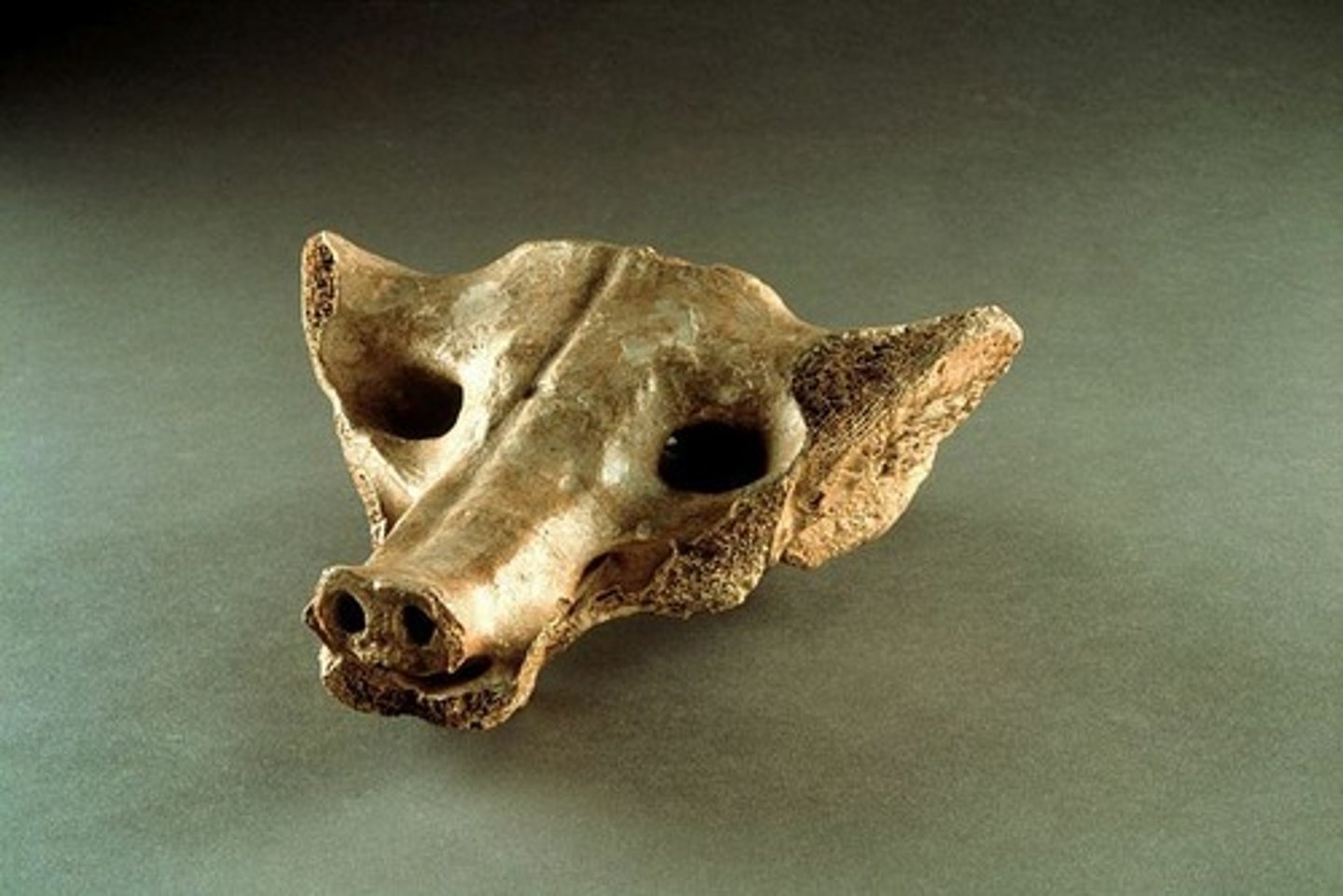
Anthropomorphic stele 4th millenium BCE
sandstone; belted robe hangs a double bladed knife/sword
PURPOSE: grave marker, religious burial purpose
anthropomorphic: human form
stele: stone slab used to mark graves
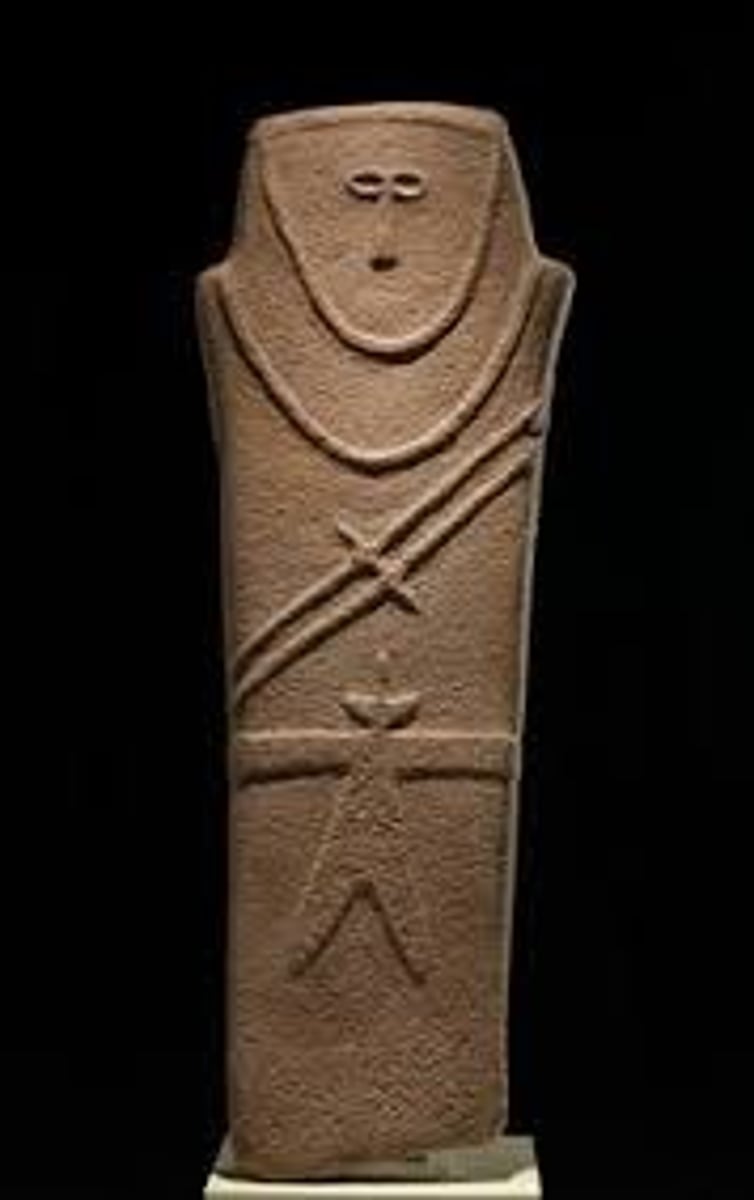
Jade Cong 3300-2200 BCE
jade; abstract design; face pattern
PURPOSE: funerary purposes (burn incense); found by a gravesite; placed around bodies; jade linked w/ virtue, durability, subtlety, and beauty
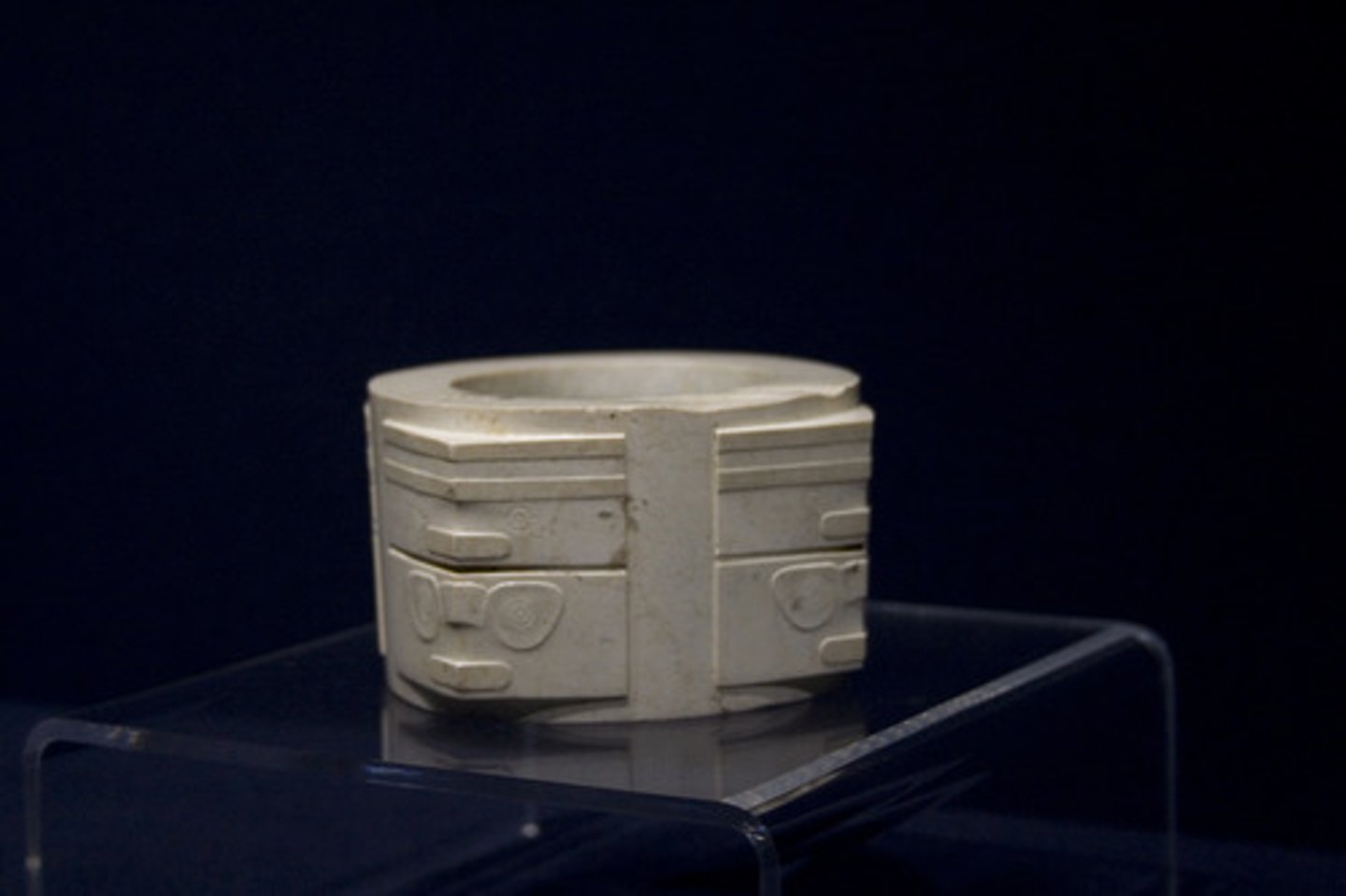
The Ambum Stone 1,500 BCE
greywacke; Oceanic art;
composite: made up of various parts/elements
zoomorphic: resembling animals forms; masked human, spirit beings, or ancestors OR anteater embryo in fetal position;
stylized art: form that has moved away from natural forms/shapes
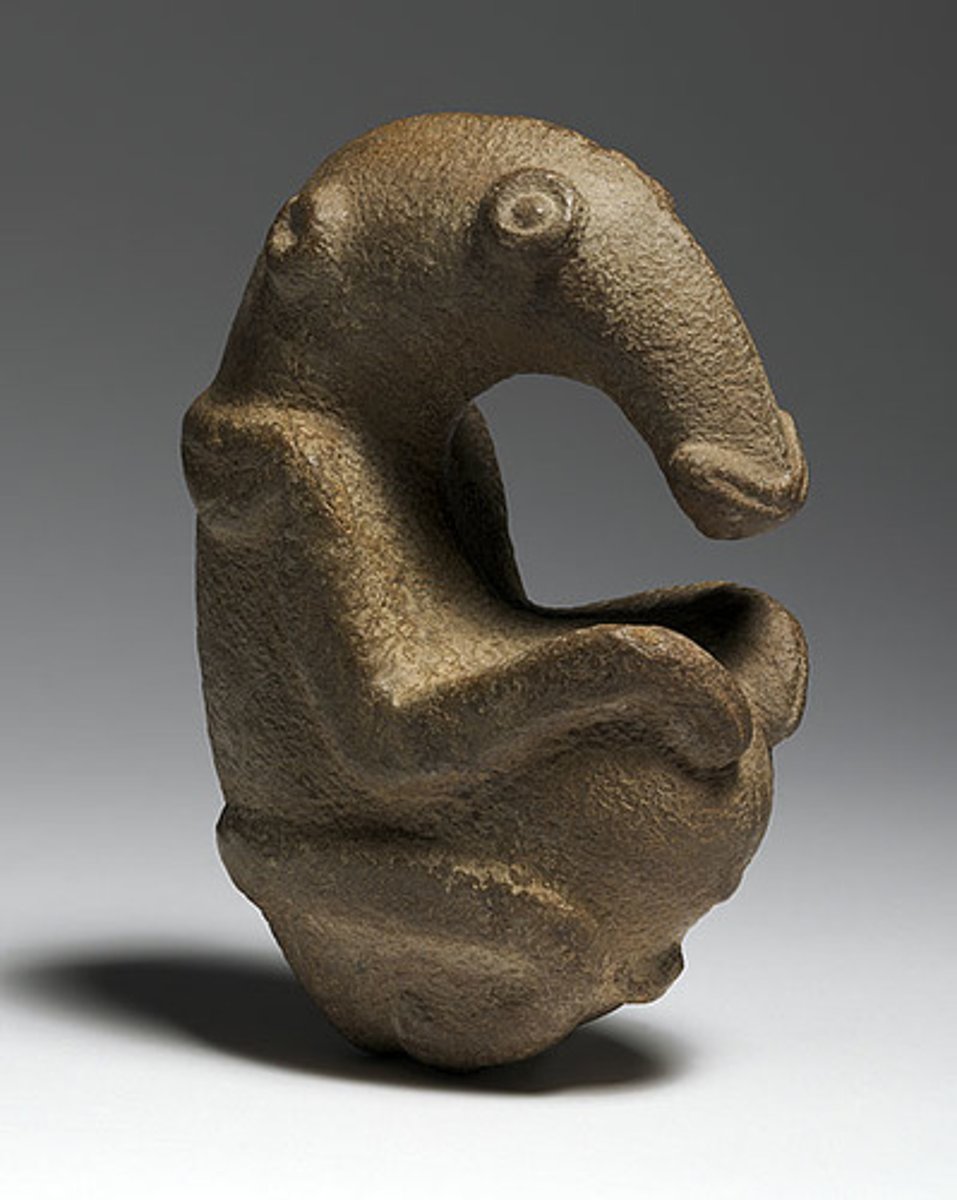
Tlatilco female figures- 1200-1900 BCE
ceramic; Mexico noted for pottery; show elaborate details of hairstyles , clothing, and body ornaments; two heads signified conjoined twins or stillborn; first evidence of congenital defects
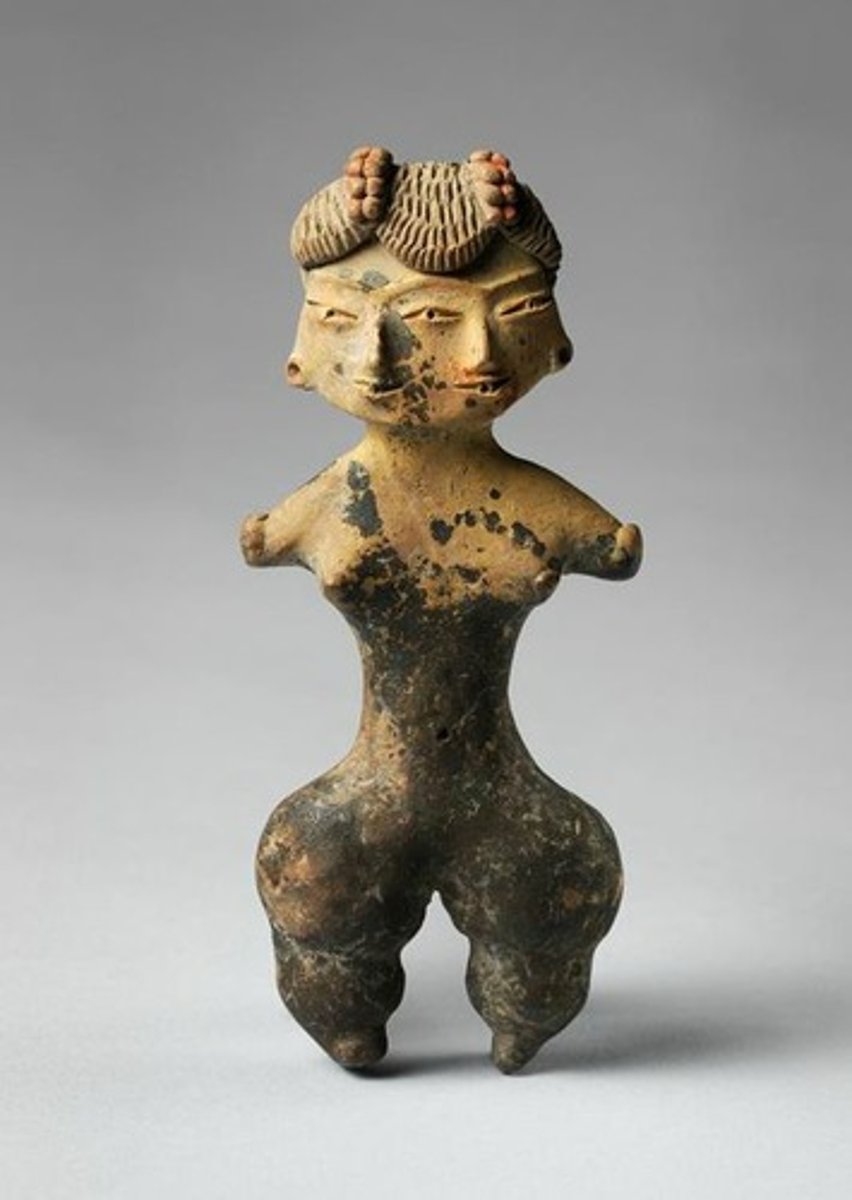
Terra Cotta Fragment- 1000 BCE
Solomon Islands; terra cotta; may have been used for serving or storing food; characteristic use of curved stamped patterns (dots, circles, and hatching); comb-like tomb used to male designed; one of oldest faces in Oceanic art
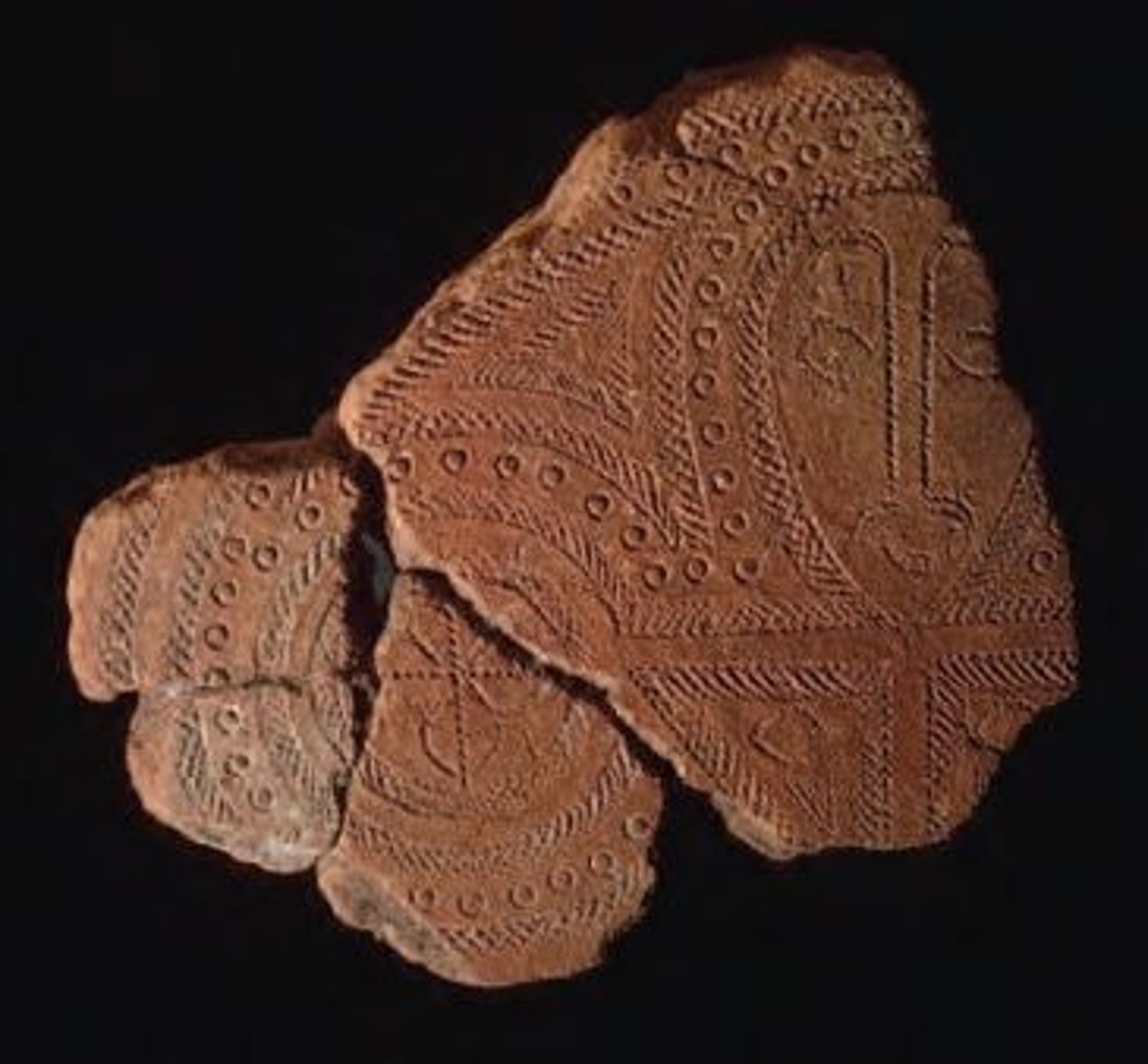
Apollo 11 Stones- 25,000-25,300 BCE
charcoal, ocher on stone; found n Wonderwerk cave in Namibia; profile of animal in charcoal; location supports idea that humans began in Africa
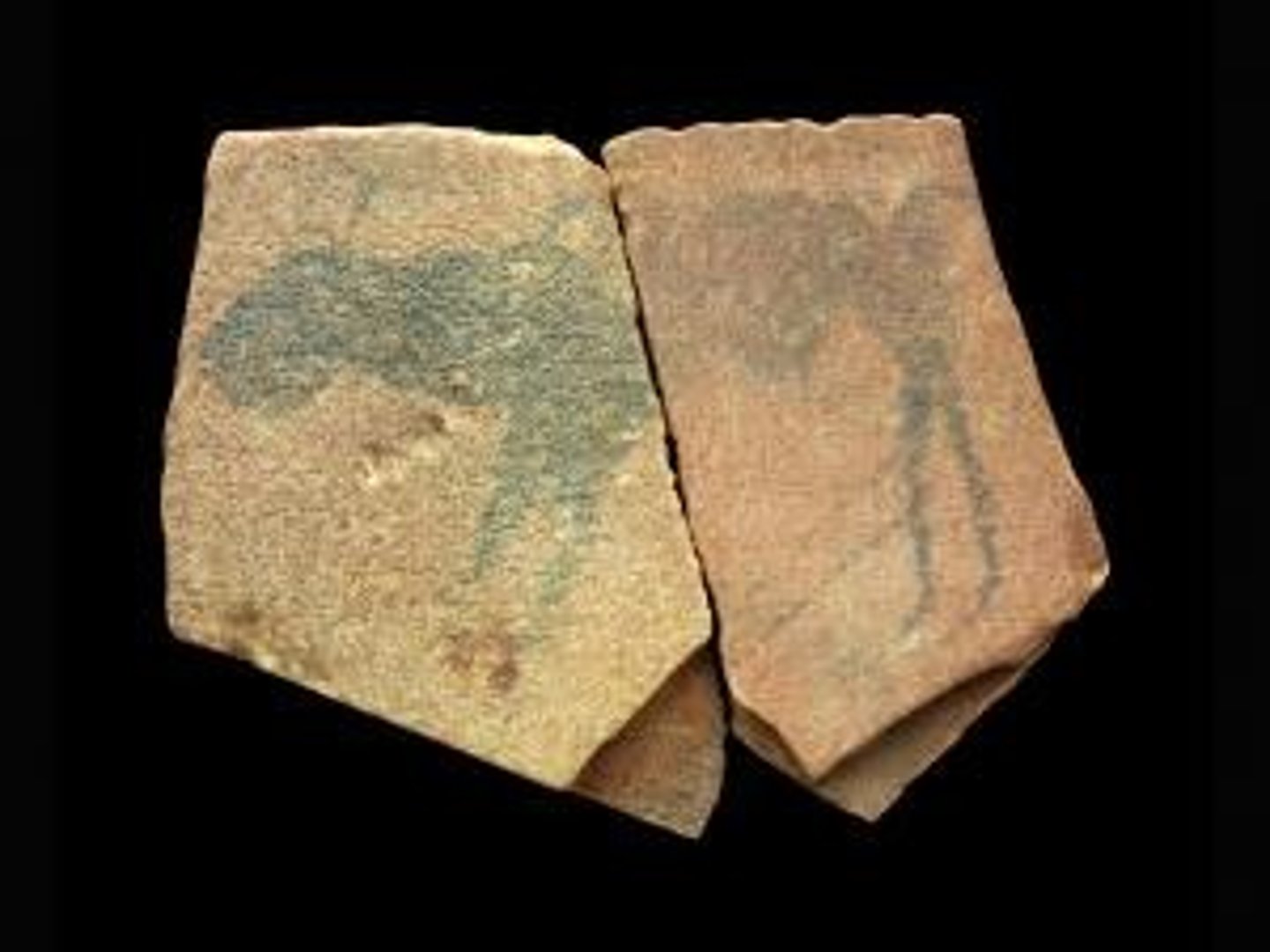
Lascaux Cave (Hall of Bulls)- 15,000-13,000 BCE
pigment on rock; paint made from charcoal, iron ore, and plants; 650 paintings; 2000 paintings over 2000 years; twisted perspective- bodies depicted in profile, horns frontal POV; linear- line drawn to define animal's contour; used to ensure successful hunt
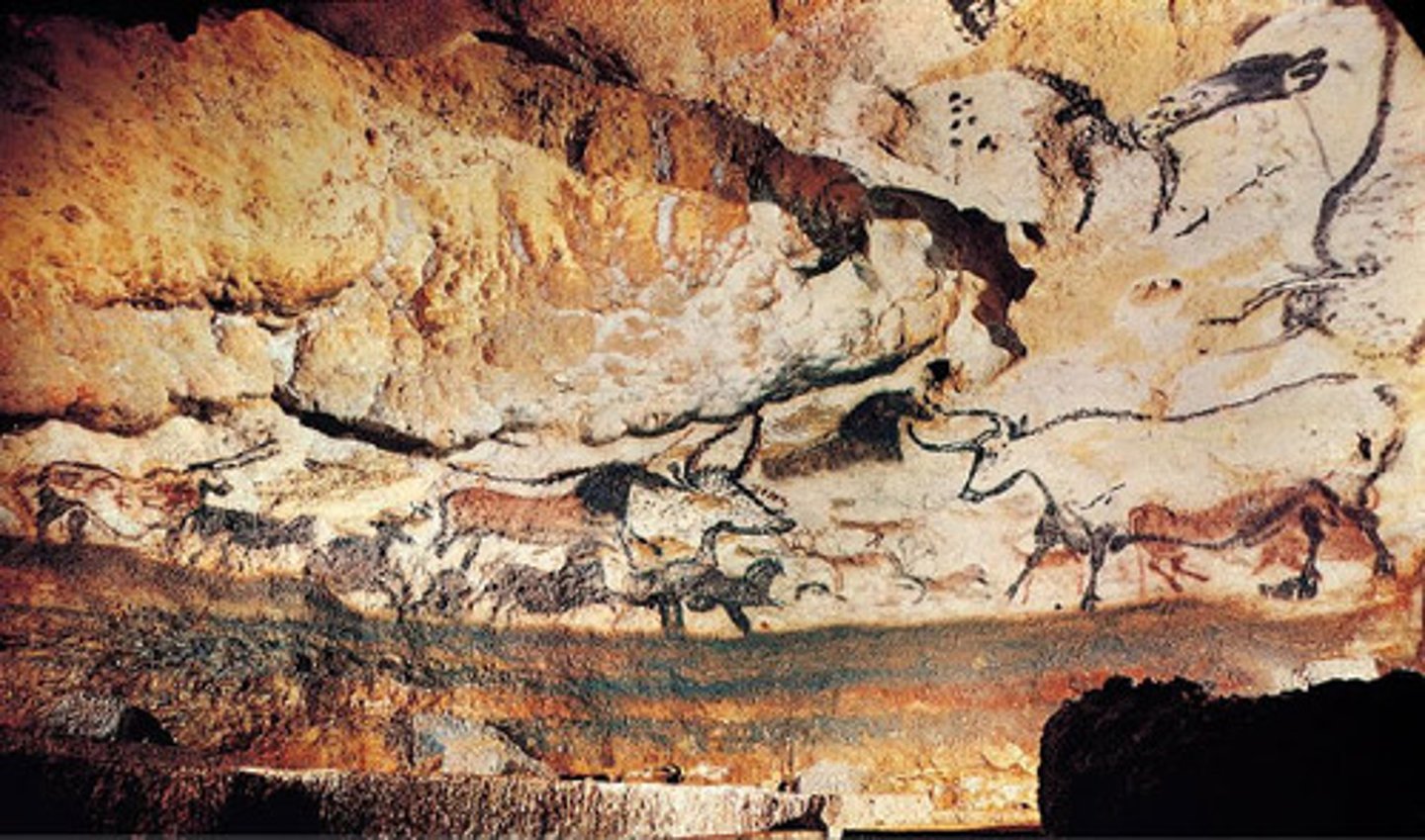
Running Horned Woman- 6,000-4,000 BCE
rock painting; 15,000+ paintings and engravings found;
composite view of body; depicts livestock; some drawings naturalistic + some abstract; found on isolated rock --> cave could not be used as dwellings
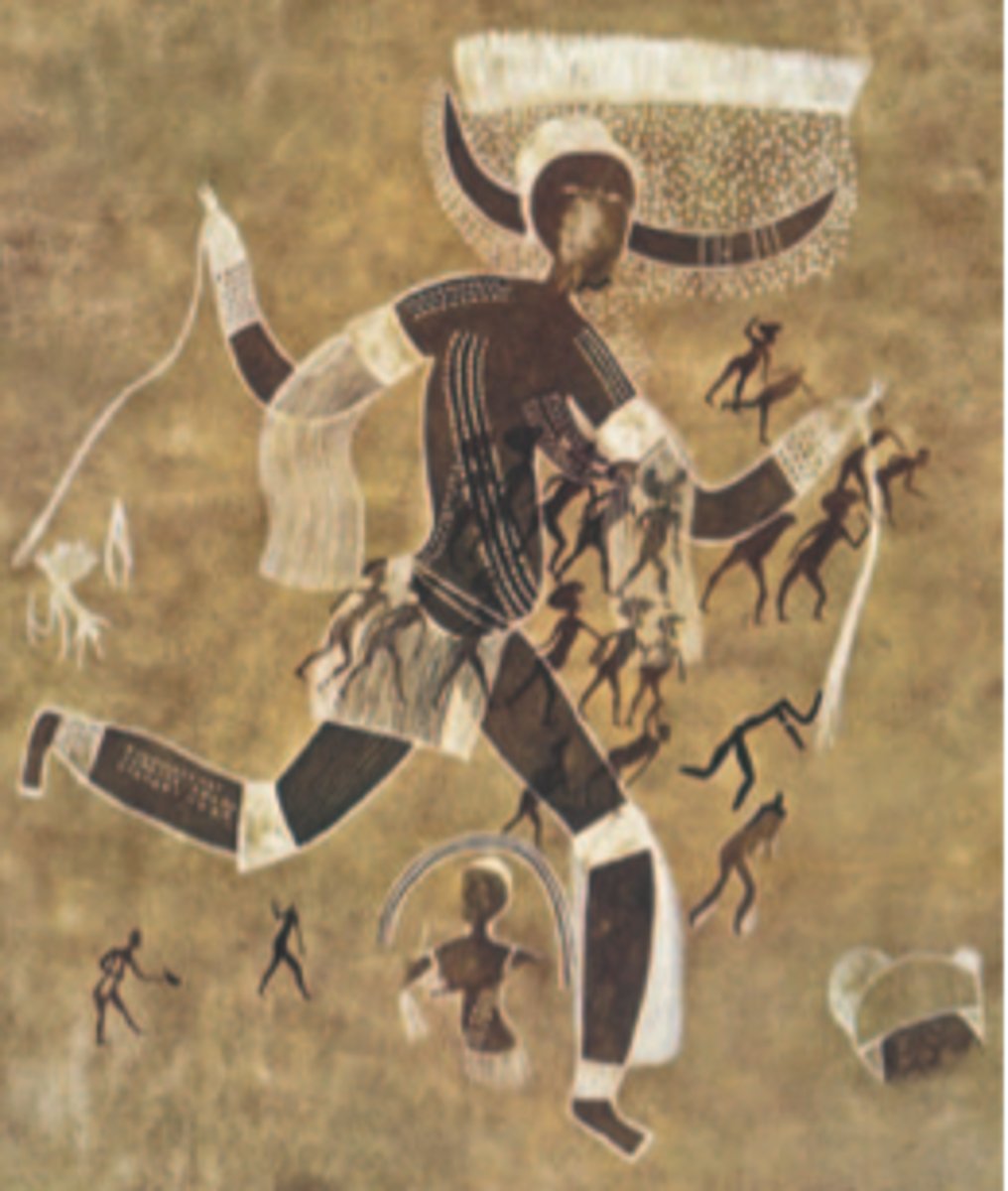
Stone Henge- 2500-1600 BCE
sandstone; post and lintel structure; people buried at this site; stones over 50 tons; center of ceremonies concerning death and burials;
Henge- neolithic monument characterized by a circular ground plan